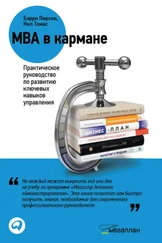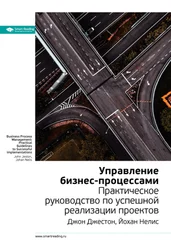Sutherland, J., Schwaber, K. (2012) Software in 30 Days: How Agile Managers Beat the Odds, Delight Their Customers, And Leave Competitors In the Dust , Hoboken, John Wiley.
Strelecky, J. (2008) The Big Five for Life: Leadership’s Greatest Secret , New York, Macmillan.
Swensen, D. F. (2009) Pioneering Portfolio Management: An Unconventional Approach to Institutional Investment , New York, The Free Press.
Tague, N. R. (2005) Quality Toolbox , Milwaukee, Quality Press.
Tannenbaum, R., Schmidt, W. H. (1958) ‘How to Choose a Leadership Pattern’, Harvard Business Review , 36(2): pp. 95–101.
Taylor, F. W. (1914) The Principles of Scientific Management , New York, Harper Business Essentials.
Thijssen, J., Van der Heijden, B., Rocco, T. (2008) ‘Toward the Employability-Link Model: Current Employment Transitions to Future Employment Perspectives’, Human Resource Development Review , 7:2, pp. 165–83.
Treacy, M., Wiersema F. (1993) ‘Customer Intimacy and Other Value Disciplines’, Harvard Business Review , pp. 83–93.
Treacy, M., Wiersema F. (1995) The Discipline of Market Leaders , New York, Perseus.
Trompenaars, F., Hampden-Turner, C. (2004) Managing People Across Cultures , West Sussex, Capstone.
Trompenaars, F., Hampden-Turner, C. (2009) Innovating in a Global Crisis: Riding the Whirlwind of Recession , Oxford, Infinite Ideas.
Trompenaars, F., Hampden-Turner, C. (2010) Riding the Waves of Innovation: Harness the Power of Global Culture to Drive Creativity and Growth , New York, McGraw-Hill.
Trompenaars, F., Hampden-Turner, C. (2012) Riding The Waves of Culture: Understanding Diversity in Global Business (3rd edition), New York, McGraw-Hill.
Trompenaars, F., Prud’homme, P. (2005) Managing Change Across Corporate Cultures , London, John Wiley.
Trompenaars, F., Voerman, E. (2009) Servant Leadership Across Cultures , Oxford, Infinite Ideas.
Trompenaars, F., Woolliams, P. (2004) Business Across Cultures , New York, John Wiley.
Trompenaars, F., Woolliams, P. (2009) ‘Towards a Generic Framework of Competence for Today’s Global Village’, The SAGE Handbook of Intercultural Competence , edited by D. K. Deardorff, Thousand Oaks, Sage.
Tuckman, B. W. (1965) ‘Developmental Sequence in Small Groups’, Psychological Bulletin , 63(6): pp. 384–399.
Tuckman, B. W., Jensen, M. C. (1977) ‘Stages of Small-Group Development Revisited’, Group and Organization Studies , 2:4, pp. 419–427.
Tupes, E. C., Christal, R. E. (1961) ‘Recurrent personality factors based on trait ratings’, (Technical Report No. ASD-TR-61-97), Personnel Research Lab Lackland AFB TX.
Ulrich, D. (1997) Human Resource Champions: The Next Agenda for Adding Value and Delivering Results , Boston, Harvard Business School Press.
Ulrich, D., Brockbank, W. (2005) The HR Value Proposition , Boston, Harvard Business School Press.
Ulrich, D., Younger, J., Brockbank, W., Ulrich, M. (2012) HR from the Outside in: Six Competencies for the Future of Human Resources , New York, McGraw-Hill.
Vakratsas, D., Ambler, T. (1999) ‘How Advertising Works: What do we Really Know?’, The Journal of Marketing , 63:1, pp. 26–43.
Van der Heijde, C., Van der Heijden, B. (2006) ‘A Competence-Based and Multidimensional Operationalization and Measurement of Employability’, Human Resource Management , 45:3, pp. 449–476.
Van Dierendonck, D. (2011) ‘Servant Leadership: A Review and Synthesis’, Journal of Management , 37:4, pp. 1228–1261.
Vaughn, R. (1980) ‘How Advertising Works: A Planning Model’, Journal of Advertising Research , 20:5, pp. 27–33.
von Clausewitz, C. (1991) On War (translated by Col. J. J. Graham), New York, Dorset Press.
Vullings, R., Spaas, G., Byttebier, I. (2009) Creativity Today: Insight, Inspiration and Practise for Enhancement of Your Creativity , Amsterdam, BIS Publishers.
Warfel, T. Z. (2009) Prototyping: A Practitioner’s Guide , New York, Rosenfeld Media.
Waterman Jr., R. H., Peters, T. J., Phillips, J. R. (1980) ‘Structure is not Organization’, Business Horizons , 23(3): 14–26.
Weihrich, H. (1982) ‘The TOWS Matrix — a Tool for Situational Analysis’, Long Range Planning , 15:2, pp. 54–66.
Weisberg, R. W. (2006) Creativity: Understanding Innovation in Problem Solving, Science, Invention, and the Arts , Hoboken, John Wiley.
Welch, J. (2005) Winning , New York, HarperCollins.
Welch, M. (2011) ‘The Evolution of the Employee Engagement Concept: Communication Implications’, Corporate Communications: An International Journal , 16:4, pp. 328–346.
Welch, M., Jackson, P. R. (2007) ‘Rethinking Internal Communication: A Stakeholder Approach’, Corporate Communications: An International Journal , 12(2), 177–198.
Wells, P. E. (2013) Business Models for Sustainability , Cheltenham, Edward Elgar Publishing.
White, C. M. (2012) Social Media, Crisis Communication, and Emergency Management: Leveraging Web 2.0 Technologies , Boca Raton, Taylor & Francis.
Williams, B., Hummelbrunner, R. (2011) Systems Concepts in Action: A Practitioner’s Toolkit, Stanford , Stanford University Press.
Wilson, A., Zeithaml, V. A., Bitner, M. J., Gremler, D. D. (2012) Services Marketing (2nd European Edition), Maidenhead, McGraw-Hill.
de Wit, B., Meyer, R. (2010) Strategy: Process, Content: Context: An International Perspective , Minneapolis, West Publishing Company.
Wongrassamee, S., Simmons, J. E. L., Gardiner, P. D. (2003) ‘Performance Measurement Tools: The Balanced Scorecard and the EFQM Excellence Model’, Measuring Business Excellence , 7:1, pp. 14–29.
Wood, J. T. (2013) Interpersonal Communication: Everyday Encounters (7th Ed.), Boston, Wadsworth.
Yunus, M. (2003) Banker to the poor: the story of the Grameen bank , London, Oram Press.
Zacharakis, A., Spinelli, S., Timmons, J. A. (2011) Business Plans that Work: A Guide for Small Business , New York, McGraw-Hill.
Zichermann, G., Cunningham, C. (2011) Gamification by Design: Implementing Game Mechanics in Web and Mobile Apps , Sebastopol, O’Reilly.
Zurawicki, L. (2010) Neuromarketing: Exploring the Brain of the Consumer , Heidelberg, Springer.
Список литературы, использованной для визуализации моделей
Ниже представлены источники, на основе которых мы визуализировали шесть теорий и моделей, включенных в нашу комплексную модель эффективности деятельности, плюс 32, предложенные в части, посвященной реализации. Чтобы эти сложные теории стали доступнее, мы сопроводили их описание иллюстрациями. Рисунки к 55 из 100 моделей основаны на иллюстрациях авторов, хотя зачастую мы добавляли персонажей или символы, что позволяло лучше донести основную мысль. В этом случае мы сопровождаем иллюстрации ремаркой «Источник» (Taken from). Для оставшихся 45 моделей нам пришлось проявить творческий подход, чтобы выразить суть в иллюстрации: авторы моделей не представили собственные идеи графически. В этом случае мы указываем: «По материалам» (Interpretation of ideas found in).
Читать дальше











